Communicating Christ in a Multicultural World
3. High Orthodoxy
Lesson Objectives
Understand what Roman Catholics and Orthodox adherents believe and how to reach those not yet committed to Christ with the Gospel.
Introduction
Studying the Roman Catholic and Orthodox Churches is like analysing science, history, or humanity - a gigantic subject. We usually think of:
- cathedrals, monasteries, shrines and other buildings (such as St Peter's in Rome)
- priestly vestments (in churches, orders)
- bells, incense, candles, altar rails, fonts, confessionals, images, stained glass windows
- crucifixes, Rosary beads, genuflection
- prayer books, choir boys, masses for "baptism", marriage, death, other special events
- distinctions between clergy vs laity
- Catholic schools, social services (eg St Vincent de Paul)
- major events, such as World Youth Day (over 3 million on final day in Rio in 2013)
- the role of the church in nationalism, Liberation Theology, politics (eg Opus Dei)
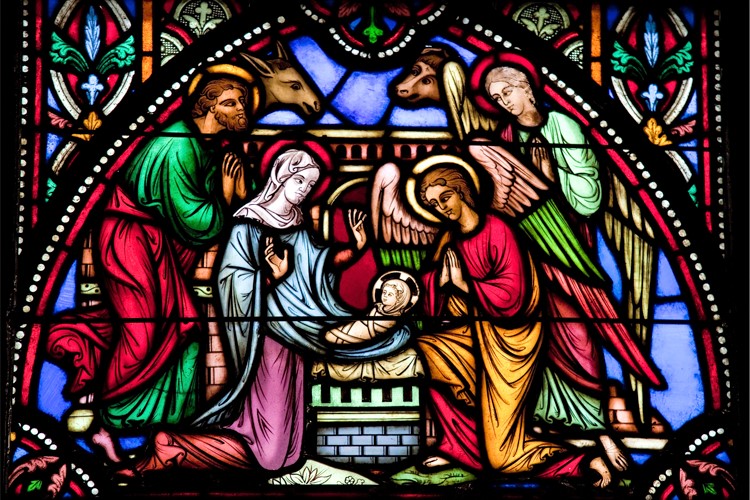
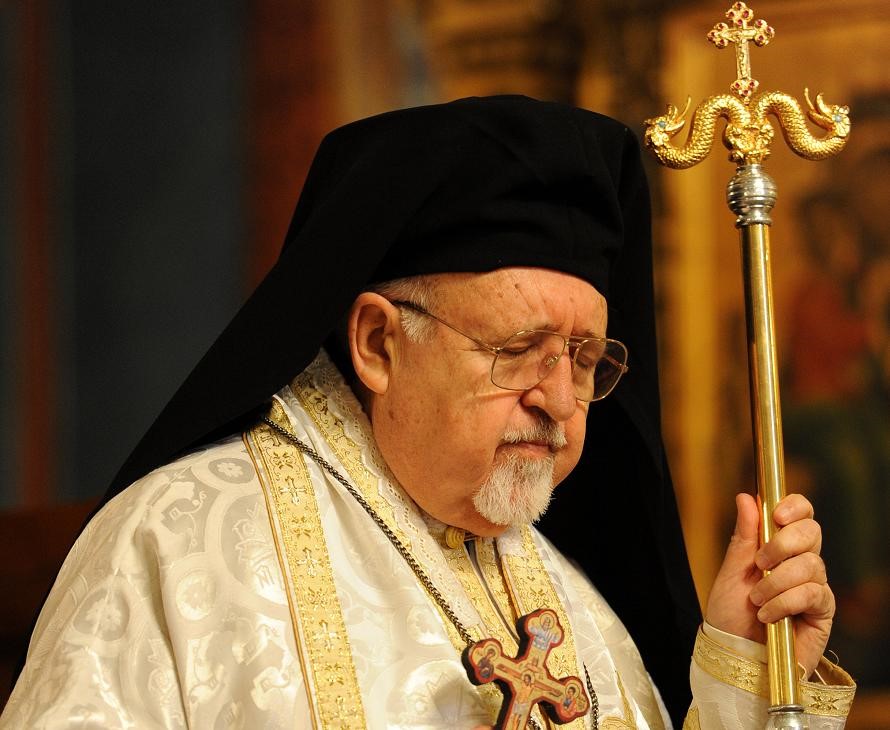
Often associated with lengthy periods of religious conflicts (politics in league with ideology) and colonization ("Suasion of the Sign", Comaroffs). Excesses occurred, eg Crusades, destruction of indigenous peoples, inquisitions, religious wars, schisms. Syncretism rife. Notable apologists, eg Thomas Aquinas. At same time, people like Brother Lawrence & Thomas a Kempis showed Spirit of Christ.
It is important to distinguish between political histories, acts carried out in the names of religion, and the underlying faith systems themselves. We need to be wary of focusing on stereotypes and missing the heart. God looks at people's hearts.
THE STATE OF ORTHODOXY
Orthodox = Holding correct opinions; in harmony with what is authoritatively established, approved, conventional.
Catholic = from Greek "Katholikos" or "universal. First used by Ignatius of Antioch (AD 107) to distinguish the entire body of Christians from individual congregations.
The Roman Catholic Church came out of Christianity. It is the largest Christian body in the world; more followers than other Christian groups combined; more than any non-Christian religion. 1 billion + followers. Roman Catholicism is based on the premises that:
special ministry was conferred on Peter, operative in every age (through "Apostolic succession"), to build Christ's church (Matthew 16: 18-19, Douay Version). The Bishop of Rome (the Pope) has historically borne that ministry. Church is visible repository of the truth and dispenser of the grace of God through a priestly order of ministry.
Most Roman Catholics live in Europe. North and South America. In France, the Republic of Ireland, Italy, Spain, and most Latin-American countries. The majority of people notionally belong to the Catholic Church. Operates schools, universities, hospitals, orphanages and homes for the aged.
Orthodox Churches comprise those that accepted decisions of first 7 Councils and relate to Ecumenical Patriarch of Constantinople. Result of split in church in 6th century. Orthodox churches originally used Greek; the Catholic Church in the West used Latin. The Greek Church extended north into Bulgaria, Russia and Slav lands > the Ukrainian State of Kiev embraced Christianity in the form of Orthodoxy in 988. During its history splintered along national lines, eg Greek, Russian (includes Ukrainian), Georgian. Romanian. Serbian. Macedonian. Bulgarian, Albanian, Syrian (Antiochian- believed by followers to descend from the original Antioch church). Orthodox Church does not have a central government. Different "patriarchs" exist; some do not recognise one another. Much of the diffuse nature of the Orthodox Church today resulted from 20th Century politics and 50 years of European communism. In Russia, Church leaders who operated openly were sometimes accused of linkages/complicity with Soviets. Currently about 200 million Orthodox in the world.
Numerous churches within the broad definition of Orthodox are "autocephalous", ie having their own heads; their bishops do not report to higher authorities.
Links with nationalism, eg Kosovo. Prior to the break-up of Yugoslavia, 37% of the population was Orthodox. Since the break-up 66% of those in Serbia and Montenegro are Serbian Orthodox, relating to a Patriarch in Belgrade. The Ukrainian Orthodox Church was severely repressed by Soviets because a vehicle for nationalism. (In Australia there are some 3,200 Ukrainian Orthodox.) In former USSR most children "baptised under Communist rule; explains resilience of Orthodox Church and strong emergence since the mid-1980s.
Both Roman Catholic & Eastern Orthodox claim to be the direct heirs and true preservers of the original apostolic Christian church. One of the things they can (correctly) point to is a generally greater degree of uniformity and consistency than 80,000 Protestant denominations and sects.
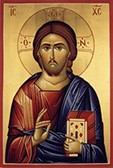
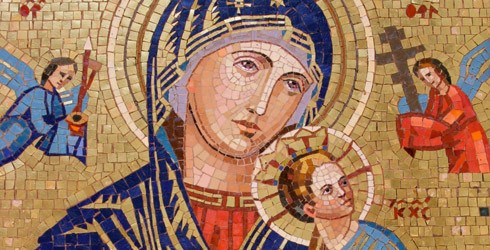
HISTORICAL SUMMARY
Roman Catholic Church an important force in world history. During the Middle Ages, for example, had great power in Western Europe. Remember: it was the only church in the West. Its universities & monasteries became centres of learning. During the 1500-1600s. Catholic missionaries went to the New World, Africa, and Asia, where they played an important role in spreading Western culture.
Important Dates - Thumbnail Sketch
Constantine the Great the first Roman emperor to become a Christian, in 312. In 313, with Licinius, the emperor of Rome's eastern provinces, granted freedom of worship and equal rights to all religious groups in the empire. By the late 300s, under Emperor Theodosius, Christianity had become the official, exclusive religion of the empire. Recognition of Christianity had unfortunate effects, eg the church attracted many who lacked the dedication of early Christians. Emperors intruded into the internal affairs of the church, which was also vulnerable politically.
Monasticism began to develop in the 300s. This way of life, in which a person withdraws from worldly affairs and is completely devoted to religion, was to play an important part in church history. As persecution ceased and Christianity prospered, monks replaced martyrs as the Christian ideal. Some spoke of white, green and red martyrs (white being those who lived for Christ to the exclusion of earthly delights; green being those who made major sacrifices, such as life-long withdrawal to monasteries; and red being those who gave their lives for the Gospel).
Bishops from throughout Christendom world met several times to resolve theological disputes. The Council of Nicaea I met in 325 and condemned the teachings of Arius. In 381, the first Council of Constantinople also took a stand against Arianism. The Council of Ephesus in 431 condemned the teachings of Nestorius, the patriarch (bishop) of Constantinople. Nestorius taught that Mary was the mother of Christ but not the mother of God; this had implications for the way the divinity/humanity of Jesus was understood. In 451, the Council of Chalcedon denounced Monophysitism, which did not recognise the two natures of Christ. Some Christian denominations have been separated from Western Christianity ever since.
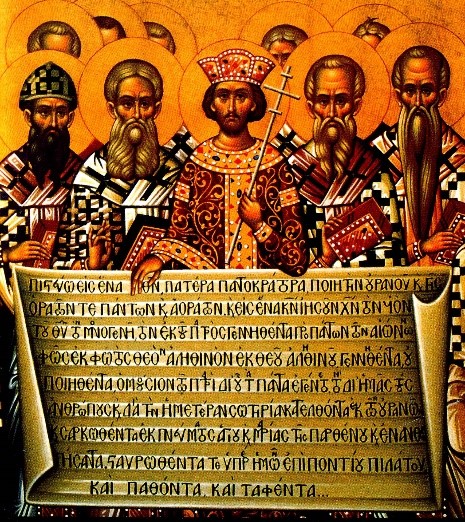 Early depiction of the Council of Nicaea; Constantine at the centre.
Early depiction of the Council of Nicaea; Constantine at the centre.
Some of the most distinguished literature in church history was produced between 325 and 451. Notable writers of this period included the historian Eusebius, the bishop Saint Athanasius, the theologian Saint Augustine, the preacher Saint John Chrysostom. the poets Saint Ephrem and Prudentius, and the Biblical scholar Saint Jerome. The writings of these men had a great influence on church thought in later centuries.
Conflict with the East. Before the 400s, a single Christian church existed. Each nationality expressed Christian faith in its language and liturgy and, at times, its own theology. Gradually, cultural, geographic, political, linguistics and religious differences led to several separate churches in the East Roman Empire. This was hastened after Constantinople was established as the new capital of the empire (in lieu of Rome, where the Pope still resided) in 330. Beginning in the 400s, Eastern churches began to drift from the authority of Rome and the church in the West.
In 476, barbarian forces led by the Germanic general Odoacer deposed the last emperor of the West Roman Empire. Many historians use this date to mark the end of the Roman Empire in the West and the start of the Middle Ages. During the Middle Ages, the influence and power of the church reached their peak.
The collapse of the West Roman Empire meant no power had political control in the West. Western Europe except Ireland came to be ruled by barbarians (Arians or non-Christians). Beginning with Pope Gregory the Great in 590, the church set out to create a Christian world (what became known as Christendom) in the West. Its instruments were the papacy and monasticism, along with important political alliances.
Split with the East. In the 800s, Photius, patriarch of Constantinople, had a dispute with the Popes about authority over Eastern Christians. In the 1000s, a further dispute emerged between Rome and the patriarch of Constantinople, Michael Cerularius. Each church claimed the other was interfering in its affairs. Serious splits led to a formal division between the Eastern churches that employed the Byzantine rite and the Western church that followed the Latin rite and acknowledged the primacy of the Pope. [Some churches eventually reunited with Rome, forming the Eastern Catholic churches.)
The reign of Pope Innocent laid the groundwork for the Dominican order. It also led to the establishment of the religious court called the Inquisition in 1231.
During the 1400s, a revival of religion occurred. Many Catholics expressed this feeling in emotional devotions (prayers and worship) to the sufferings and death of Jesus. During this time, however, piety was divorced from its roots in theology, and theology hardened into schools of thought and lost much of its vitality.
The Council of Florence, which began in 1438, reunited the Western church with some Eastern churches. However, the reunification lasted only a few years. In 1453, Muslims captured Constantinople and ruled over most Eastern Christians until the 1800s.
By the early 1500s, the papacy was dominated by temporal concerns. The Roman Curia was corrupt. Bishops lived like princes and ignored the faithful. Many clergy were ignorant and neglected pastoral duties. Members of religious orders became increasingly worldly. Fear and superstition were common. The liturgy no longer held much meaning or inspiration for the people, and theology was dry and unproductive.
In 1517, Martin Luther, a member of the Augustinian order, issued his famous Ninety-Five Theses in Wittenberg, Germany, attacking indulgences (remission of whole or part of sins already forgiven) and the abuses that arose in granting indulgences. (Catholics believe an indulgence is a release from part or all of temporal punishment due for sin, provided that the sin has already been forgiven.) Many preachers sold indulgences; people bought them hoping they would hasten the release of dead persons' souls from purgatory. Luther's attack on indulgences began the Reformation. (Orthodox Churches were little affected by the Reformation).
The Counter Reformation was the Roman Catholic Church's self-reforming reaction to the Protestant Reformation. It is usually understood as extending from about the mid-1500s to the end of the Thirty Years' War (1618-1648).
A force in the Counter Reformation was the Society of Jesus, or the Jesuits. Ignatius Loyola founded the Jesuits in 1534, and Paul Ill confirmed the order in 1540. The Jesuits were at the Pope's service. They fought Protestantism in Belgium, Luxembourg, the Netherlands, France, and eastern and central Europe. The order created extensive educational facilities, which continues to the 21st century.
The Council of Trent (1545-1563) issued decrees on the Mass and other areas of doctrine and discipline. Its decrees included such topics as the training of priests and the granting of indulgences.
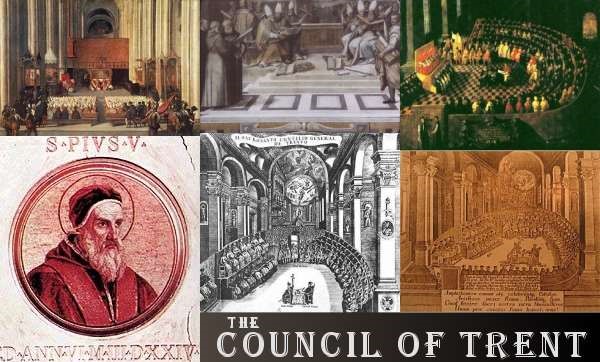
In 1846, Pius IX became Pope. He ruled until 1878-the longest reign in papal history. Pius' reign reached a high point when he summoned Vatican Council I (1869-1870). The council defined as Catholic doctrine the Pope's primacy over the whole church. It also declared him to be infallible- that is, incapable of error when, as supreme head of the church, he formally defined matters of faith and morals.
While the church lost ground in Europe to Protestantism, it grew in the New World.
From the 1500s -1700s, Catholic missionaries carried the faith throughout the Western Hemisphere, in connection with the colonizing efforts of Spain, France, and England. The church made agreements with many nations to guarantee its freedom and its spiritual authority over Catholics in the countries involved. During this period, the church also updated its worldwide missionary activities.
Throughout the 1900s, the church also faced hostility from European dictatorships. eg in Germany, Italy and the Soviet Union. In the 1940s and 1950s, Pope Pius XII worked to preserve the religious freedom of Catholics under dictatorships. In the early 1990s, the collapse of Communism brought the church in Eastern Europe greater religious freedom.
John XXIII succeeded Pius in 1958. A turning point came when John called Vatican Council II (1962-1965). The council tried to give a deeper understanding of the church and its doctrine and help serve the needs of the modern world.
In 1993, Pope John Paul II issued a strong encyclical (papal message), reaffirming the church's conservative stance on issues such as homosexuality and birth control.
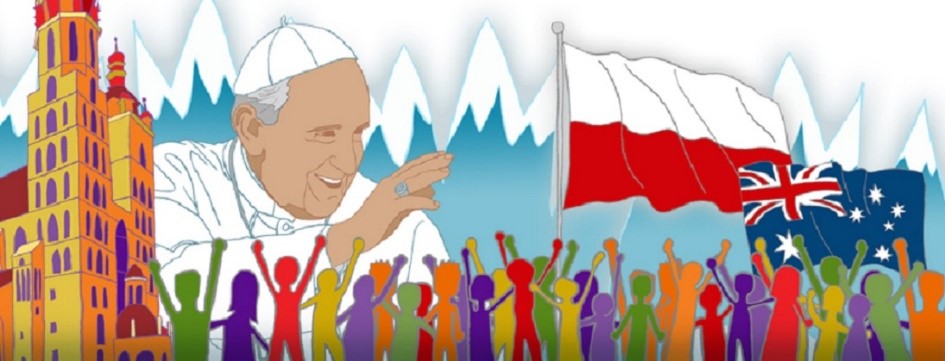
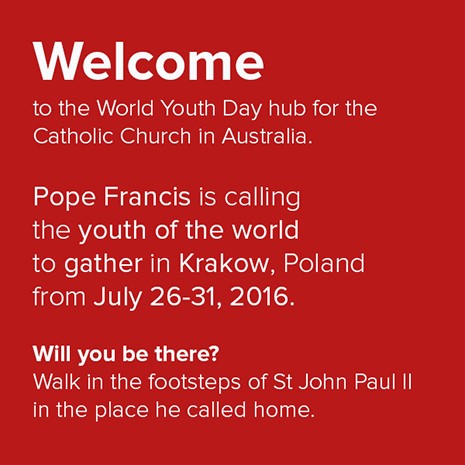
Australian Situation
Roman Catholic Church
Many Catholics were in the First Fleet (1788) and subsequent convict transportations. No Catholic mass permitted till 1803. (Was still illegal in the UK.) Catholics were obliged to attend Protestant services. The first official Catholic Priest (Father John Therry) arrived in 1820. [Until 1843 Catholics in Australia were under the Vicar of Mauritius.] Also heavily influenced by Irish Catholicism. In 1885 the first Cardinal (Moran) was appointed in Australia. Heavily involved in the new trade union movement and federationism.
Today 28% of all Australians claiming to be Christians are Roman Catholics. Catholics attending church weekly: 1954= 75%; 1981=37%; 1985= 35%. Possibly lower in practice.
Politics - In 1955, many Catholics (especially in Victoria. led by B A Santamaria) left the ALP and founded the Democratic Labor Party, a strong anti-Communist party. Established the National Civic Council which focused on applying a Catholic view to modern Australian political, social and economic life.
Social Impact - Since the 19th Century the Catholic Church in Australia has been involved in education. In 2010 18% of children in Australia were attending Catholic schools. Mission work continues among Aborigines. Some sections of the church have participated in peace and antinuclear movements. In recent times, the Catholic Church has been outspoken on abortion, euthanasia and Aboriginal issues. The Australian Episcopal Conference has committees for Justice, Development and Peace, Education, Doctrine and Morals.

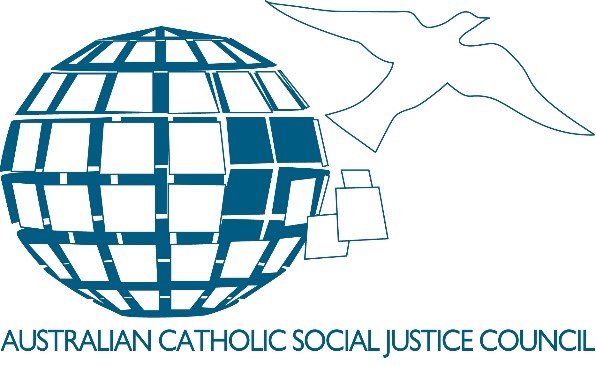
Non Roman Catholic "Catholic" Churches in Australia (mainly Sydney & Melbourne):
- Catholic Traditionalist Movement (Pius X Society)
- Old Catholic Church (Utrecht)
- Philippine Independent Church
- Hussite Church (formerly Czechoslovak Church)
- Maronite Catholic (mainly Lebanese)
- Melkite Diocese of Australia and New Zealand (mainly immigrants from Middle East)
- Armenian Catholic
- Chaldean Catholic (from Iraq, Syria, Iran and Lebanon)
- Ukrainian Catholics
Orthodox Churches
In Australia since late 19th Century. Increased markedly after WWII, with massive immigration programme. Around 522,000 members. 71% Greek Orthodox. 17 Orthodox "streams" in Australia today.
Other "High" Churches
Other (non-Roman Catholic, non-Orthodox) "high" churches with congregations in Australia (mainly Sydney and Melbourne) are:
- Holy Apostolic Catholic Assyrian Church of the East (mainly Iraqis)
- Ancient Church of the East (also mainly Iraqis)
- Syrian Orthodox (Jacobite)
- Malankara Syrian Orthodox (Indian Orthodox) (claim descent from Apostle Thomas)
- Coptic Orthodox (mainly Egyptians); believed established by St Mark at Alexandria in AD48. The head of the Coptic church is Theodoros II or Tawadros II, who was selected as the 118th pope on November 4, 2012
- Ethiopian Orthodox Church (mainly Ethiopians)
- Armenian Apostolic (mainly Armenians)
SUMMARY OF BASIC TENETS (MAINLY ROMAN CATHOLIC)
| Doctrine | Summary |
|---|
| God There is only one God. | In this God there are three Persons- the Father; the Son, who is Christ; and the Holy Spirit. |
| Jesus Christ | God sent His Son, the second Person of the Trinity, to save humanity from sin, both the original sin individuals inherit, and also from the sins they commit during their lifetime by deliberately breaking God's law. Without ceasing to be God, the Son of God was born in human form to the Virgin Mary. He saved humanity through His life and death and by rising from the dead and passing into heaven. While on earth, Jesus taught that salvation would be given to all who believe and are sorry for their sins. Orthodox churches celebrate the birth of Jesus on 6 January ("old style" calendar). |
| The Church | Jesus Christ founded the church to carry to all people the salvation He brought to the world. The church has preserved the teachings of Christ. Salvation was not complete for the entire human race when Christ left the earth; it had to be brought to each generation. Jesus commissioned His apostles to gather Christians into a church. This church is the people of God, united with Him and one another through Christ. The church is a missionary people, drawing everyone into a communion of love. The Catholic Church believes that it has preserved to a greater extent than any other Christian body the doctrine, organization, and worship willed by Jesus. Catholics no longer deny other churches are also communities of grace and salvation.
The church has three closely related functions.
- It helps people become and remain holy by the ministry of preaching and worship.
- It teaches God's truths by such means as religious education.
- It guides people toward God by means of wise laws.
The Pope (Pontiff, Holy Father) serves as spiritual leader of the Roman Catholic Church (HQ in Vatican City). A group of departments called Roman Curia assists in his direction and guidance of the worldwide church.
The hierarchy of the church consists of three levels: the Pope governs the whole church, a bishop is in charge of a diocese, and a pastor a parish. The Pope appoints bishops who in turn appoint pastors.
Cardinals are generally clergymen. They are appointed by the Pope to be his main advisers. As a group, they form what is called the College of Cardinals (including 1 Australian, Cardinal George Pell AC). They have the responsibility of electing a new Pope, when necessary.
The clergy's responsibilities are leadership and service. They conduct the liturgy of the sacraments, eg presiding at the Eucharist. They preach and give religious instruction. They also respond to the spiritual needs of their people. There are three orders (ranks) within the clergy-bishops, priests, and deacons. Each order-from deacons up through the Pope-has more responsibilities and wider powers of ministry and government than the one below it.
The role of the "laity" ("the people of a religious faith as distinguished from its clergy", Merriam-Webster dictionary) is to be a witness to their faith. The laity have an active role in the function of the church. They join with the clergy in worship and prayer, teach others by their example, elect members to parish councils, school boards, etc. At Mass, some "read" the Bible. Others distribute Communion. Some work as teachers in Catholic schools or give religious instruction to Catholic students in public schools. They also hold important positions in church-owned hospitals and other institutions.
Religious institutes are societies of Catholic men or women who live together under a set of regulations called a "rule". They often take vows of poverty, chastity, and obedience. Catholic institutes for men include the Jesuits, the Franciscans, and the Dominicans. Institutes for women include the Sisters of Charity and the Ursulines. Religious institutes are governed directly by their own appointed or elected leaders. These leaders are called "superiors".
Orthodox Churches have an Episcopal form of government (ie ruled by bishops).
|
| Holy Spirit | The Holy Spirit, sent by Christ to humanity, guides the church. |
| Creeds | The Bible and church tradition revealed by God. These teachings are found in declarations by church councils and Popes, and in statements called creeds (from "credo", "I believe"). The most important creeds include the Apostles' Creed; the Nicene Creed; the Athanasian Creed; the Creed of Pius IV; and the Creed of the People of God, set forth by Pope Paul VI. These creeds summarize doctrines on (l) the Trinity and creation; (2) sin and salvation; (3) the nature of the church; and (4) life after death, and form the basis of Catholic morality. |
| Faith | Religious faith means, above all else, a response to God. The Lord offers Himself to people in friendship and love, and people respond by giving themselves totally to Him. |
| Sin | Humanity was created by God and for God. Its destiny is to share God's life for eternity, through lovingly obeying His will. But original sin interfered with God's plan. The Bible describes Adam as committing an act of disobedience to God. Adam's sin passes on to each child born in the world. |
| Life After Death | Life does not end with the death of the body. The soul leaves the body and goes to heaven, purgatory, or hell. On Judgment Day, all souls will be reunited with their bodies.
Heaven is the community of those who have reached their destiny. They see God as He is and they love Him with complete joy. The church defines Hell as the endless absence of God, which means complete despair. It is the punishment for people who have rejected God through the enormity of their unforgiven sins. |
| Catholic morality | Right conduct is only partly expressed in such negative commandments as: do not kill, lie, or steal. Roman Catholic morality can be largely summarized in a positive statement: the church tells Catholics to love God with their whole heart and to love their fellow human beings as they love themselves. The Catholic Church teaches people must follow their consciences. But a Catholic's conscience is formed not only by personal opinion of what is right and wrong. It is also formed by the Bible's teachings, by instructions from the church, and by the faith and conduct of the Christian community. For example, Catholic teaching forbids contraception, abortion and remarriage except in situations where adultery is involved. |
| Worship and Liturgy | Catholics worship only God. The acts of worship that Catholics perform together are called the liturgy. |
| Sacraments | The seven sacraments are ceremonial signs of God's action in people's lives. The sacraments are:
- baptism -believed to remove the original sin inherited from Adam and Eve; essential for membership in the church; if an infant dies unbaptised they cannot enter the Kingdom of Heaven
- confirmation (usually around 10 yrs); laying on of hands for impartation of spiritual life by the Holy Spirit
- Eucharist (communion) - at least once a year, at Easter time
- confession and penance (absolution of sin by a priest) - Catholics must confess their sins at least once a year if the sins are serious. However, the church urges believers to receive both Eucharist and penance more frequently.
- holy orders
- marriage - in general, Catholics may also marry only once, unless one of the partners dies
- anointing of the sick. Anointing of the sick is a sacrament given to people who are dangerously ill or very old. The priest anoints the person with oil, a sign of curing, and prays that the person will receive the grace of the Holy Spirit, so he or she may be freed from sin, comforted and strengthened in soul, and restored to health.
Extreme Unction is the application of consecrated oil to all the senses of a person when near death; avails for venial sins for which satisfaction has not yet been made (cf James 5:14).
Orthodox Christians and many Catholics regard the first four as essential for salvation.
Additional explanation:
Confirmation is a sign of a new outpouring of the Holy Spirit. It enables baptized people to grow to spiritual adulthood so they can bear Christian witness with courage. During confirmation, a bishop, and sometimes a priest, puts holy oil on the forehead of the person being confirmed.
Eucharist, or Mass, is the central act of Catholics' worship of God. This sacrament re-enacts the death and resurrection of Jesus Christ in ritual form. In Holy Communion people receive the body and blood of Christ in the appearances of bread and wine. This doctrine is known as transubstantiation. Introduced in 1215.
The wafer is regarded as the body of Christ (taken from Jesus' command, "This is my body"). In 1414 the church decreed that the cup should not be given to the "laity", in part because of concerns about spillages.
"Holy orders" is the sacrament in which men chosen by the church are made deacons, priests or bishops. They become ministers of God's word and sacraments.
Marriage is the sacrament in which a man and woman promise themselves to each other for life. This sacrament helps them be faithful to the duties of marriage and family life. Orthodox priests are allowed to be married (as long as they were married prior to ordination).
Other (popular) sacramentals include the blessing of a harvest, a new school, fishing boats.
[Roman Catholics believe the sacraments dispense grace; however, the only one who gives grace is God.]
|
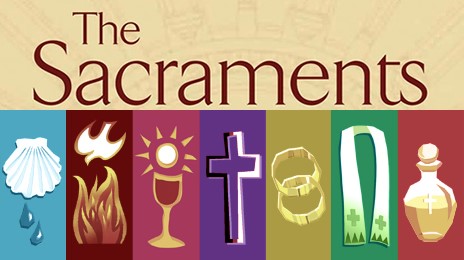
VATICAN II
Prior to the 1960s in Australia the Catholic Church taught
- the only true church (no other church had fullness of sacramental grace)
- only priests were qualified to interpret Scripture - Catholics were discouraged (forbidden) from possessing or reading privately (stemmed from 1229 Council of Valencia and 1545-63 Council of Trent). The Douay Version (more recently the Jerusalem Bible) was the basis of priestly reference in the vernacular.
Catholics could only marry Catholics, given the sacramental nature of marriage - until 1908 marriage to a Protestant was considered invalid.
Vatican Council II was the 21st council of the Roman Catholic Church. Pope John XXIII called the council, which met in four sessions in Rome from 1962-1965. Vatican Council II was the first ecumenical council held by the church since the suspension of Vatican Council I in 1870. With about 2.500 participants and many non- Catholic observers, it was the largest church council in history.
John XXIII died on June 3, 1963, and Paul VI elected the next Pope. Paul had been a leading progressive in the first session of the council. He reconvened the council and guided it to its conclusion.
Vatican Council II issued 16 documents - four constitutions, three declarations, and nine decrees. The most important were the constitutions, which dealt with the liturgy, divine revelation, the church, and the church in the modern world.
The Constitution on the Liturgy (called Sacrosanctum Concilium in Latin) started a number of reforms. The constitution led to the celebration of the Mass in the vernacular-a congregation's native language-instead of in the traditional Latin. This constitution was one of the council's most far-reaching accomplishments. It brought the central act of Catholic worship closer to the people and made it clear that the celebration was one in which the entire Catholic community played a part.
The Constitution of Divine Revelation (Dei Verbum) restored the Bible to a central place in Catholic thought and practice. It insisted that the church's teaching authority must always be submissive to the Word of God. The constitution stressed that revelation itself is not found primarily in verbal statements, but in the person of Jesus Christ who is the fullness of revelation. However, the whole community, under the leadership of its bishops, lives out the revelation it has received and transmits it from generation to generation. For centuries, Catholic theologians had treated revelation in a philosophical and abstract fashion. Bible Societies had been denounced. Translators had been branded heretics (many were executed). In contrast, Vatican Council Il adopted a more Biblical language and perspective. It presented revelation as the concrete personal encounter of men and women in history with the living God who calls them to salvation.
The Dogmatic Constitution on the Church (Lumen Gentium) described the church as the visible sign or sacrament of humanity's union with God and with one another. This constitution's favourite image of the church was that of "the people of God". By emphasizing this image, the council underscored the church's presence and involvement in human history. It also emphasized its intimate spiritual ties with the people of Israel. This focus on the church as the whole people of God enabled the council to break with the one-sided emphasis of preceding centuries on the power of the clergy. The constitution gave lay people specific responsibilities and rights within the church.
One feature of this constitution was its teaching on the "collegiality of bishops." According to the document, the bishops and the Pope form one body. This teaching complemented Vatican Council I's teaching on papal primacy and infallibility. It also supported the view of the church as a communion of local churches with the Pope as its head. The constitution thus returned to the bishops some of the authority that the papacy had absorbed over the centuries.
The Pastoral Constitution on the Church in the Modern World (Gaudium et Spes) promoted a dialogue between the Catholic Church and the modern world. Since the French Revolution (1789-1799), much of the church opposed modern attitudes in non-Catholic society, some of which were hostile to Christianity. The constitution recognized that the church exists in the world and must proclaim its message in terms the world can understand. The constitution also acknowledged that the church has much to learn from the authentic values of modern life.
The constitution was a unique product of the council. It altered the isolation from the non-Catholic world that had characterized previous church councils. It found practical expression in establishing a new relationship with non-Catholics.
In addition to the four major constitutions, the council issued two especially notable declarations. One, called Declaration on the Relation of the Church to non-Christian Religions (Nostra Aetate), celebrated the special spiritual ties binding Christians and Jews. It denounced all forms of anti-Semitism and laid the basis for a new understanding and respect between Christians and Jews. The Declaration on Religious Liberty (Dignitatis Humanae) broke with the abstract proposition that "error has no rights". Instead, it stressed that individual conscience demands respect, especially in matters of religious faith and observance.
Vatican Council II started the most far-reaching reforms within the Catholic Church in 1,000 years. Probably few participants in the council fully realized the magnitude of the changes they had set in motion. The council helped transform the church from a European-centred institution toward a more genuinely world church, with most of its followers living in Third World countries outside Europe and North America.
These transformations also created tensions. From the beginning of the council, there were conflicts between conservative and progressive views. Some Catholics believed the council actions resulted in too much change. They opposed Catholic reformers who wanted to vigorously update worship, doctrine, and the church's view of its place in the world. As one legacy of the council, Catholics have tried to emphasize the importance of the local or regional church united around its own bishop. At the same time, they have acknowledged the universal authority of the Pope. They have also attempted to affirm a common faith while encouraging different cultural expressions of that faith.
In 1965, the mutual excommunications by the Patriarch of Constantinople and the Pope of Rome (imposed in 1054) were lifted. Christians in other churches were simply called "separated brethren" a right to be called Christians) and required to be accepted as brothers by Catholics.
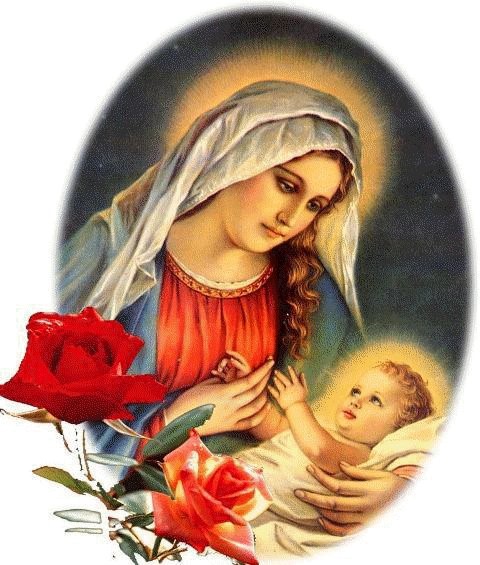
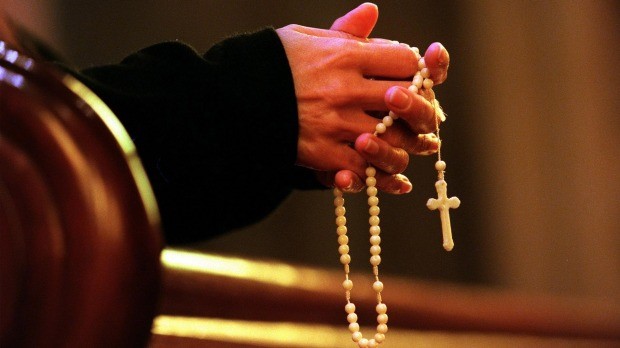
DOCTRINAL ISSUES
| Doctrine | Summary of Issues |
|---|
| Purgatory | Purgatory is a temporary state for souls who die in God's love but must be purified of remaining imperfections and/or make amends for sins already forgiven. The dead are prayed for (eg special masses) and it is expected they will pray for those still on earth.
Orthodox churches do not believe in Purgatory but teach when the faithful die they go to heaven but do not enter the presence of God till the Resurrection.
There is no Scriptural basis for Purgatory.
|
| The Mass | The Mass is a celebration of the Lord's Supper. It has two main divisions.
The first division, the liturgy of the word, proclaims the message of the Gospel, consisting of a petition for forgiveness of sins. Hymns, prayers, Bible readings, sermon, and declaration of faith.
The second division, the Eucharistic liturgy, has two parts. The priest, acting in Jesus' name "changes" bread and wine into Christ's body and blood, which the people receive in Holy Communion. Catholics believe the Mass presents again the sacrifice of Christ. The most solemn moment is the recitation of Jesus' words at the Last Supper: "This is my body ... this is the cup of my blood." The congregation "receives" Christ in Holy Communion, eating His body and drinking His blood in the appearances of bread and wine. Their sins are forgiven. God's help is given, and the members of the congregation are closely united with their fellow human beings.
Catholics must take part in the Mass on Saturday evenings or Sundays and on holy days of obligation, such as Christmas.
There is no Scriptural basis for the Mass as it is celebrated. The Bible teaches the sacrifice of Jesus was "once, for all time" (Hebrews 10:12). He sanctifies us "forever" (Hebrews 7:26, 27).
|
| The Pope | Catholics believe that the Pope (the "Bishop of Rome") is Jesus' representative on earth and a successor to St Peter, the first Pope. They regard him as the spiritual leader (by succession) of the worldwide church, based on Matthew 16:17-19. (However, Jesus was not saying that He would build His church on Peter.)
|
| Papal Infallibility | The claim the Pope is supreme was first asserted in 741. The Pope, as head of the church and Vicar of Christ is believed to be infallible in matters of faith or morals. cf John 14:26, 16:7 (stemmed from Vatican I. 1870, which taught that the Pope delivers doctrinal statements from the Holy Spirit). This teaching was retained by Vatican Il. CF Peter was considered only one of the church's pillars - Galatians 2:8-10. Paul was his equal - 2 Corinthians I. Paul censured Peter openly - Galatians 2:1 1-
16. The Orthodox church rejects "vicar" and infallibility arguments.
There is no Scriptural basis for this doctrine.
|
| Mary and Saints (Hagiography) | Mary is appealed to as an Advocate and Mediator (cf 1 Timothy 2:5). Catholics believe in immaculate conception (Mary was born without sin); not shared by Orthodox (or evangelicals), and that Mary remained a virgin after the birth of Jesus (became an accepted view after 400 AD). In 1950 Pope Pius proclaimed the Bodily Assumption of Mary (ie her body and soul were reunited at her death and that she was taken up from the grave and enthroned as Queen of Heaven).
Orthodox churches commemorate one "saint" every day of the year. Reject worship of icons, but still occurs. Reject charges of "idolatry" on the basis that worship & veneration have different meanings. Over the centuries there has been ongoing veneration of relics and pilgrimages and devotional objects (eg rosaries).
In Australia the Sisters of St Joseph was founded in 1875 by Mary MacKillop, who was canonised on 19 February 2010.
Scriptures calls all Christians "saints" (ie sanctified).
|
| Baptismal Regeneration | Catholic baptism is a ceremony in which a child or adult is "cleansed of sin to begin a new life with God". Water is poured, in the name of the Trinity, over the head of the person being baptized is a sign of the person's cleansing from sin. Because water is necessary to life, the baptismal water also is a sign of new spiritual life. Baptism also marks the beginning of a Catholic's oneness with Christ and entry into the church.
|
| Penance | Penance, or confession, is a sacrament in which Roman Catholics confess their sins to a priest, express their sorrow for having sinned, and promise to try not to sin in the future. The priest grants forgiveness in God's name. The effect of penance is to reconcile the person to God and to the Christian community. The Confessional is regarded as essential for salvation.
CF Peter did not claim authority to forgive sins - Acts 8:22. Nowhere in Scripture are we commanded to confess our sins to a priest, cf Acts 8:22; James 5:16; Proverbs 28: 13; Psalm 32:5. If God forgives (l John I:9), there is no need for priestly absolution. The "Keys of the Kingdom" (Matthew 16: 19) were to do with the building of the church.
|
| Priesthood | Celibacy has been the norm since Pope Gregory VIl in 1079. There is no Scriptural basis for it as a "norm" in ministry.
Also, Scripture teaches the "priesthood" of all believers.
|
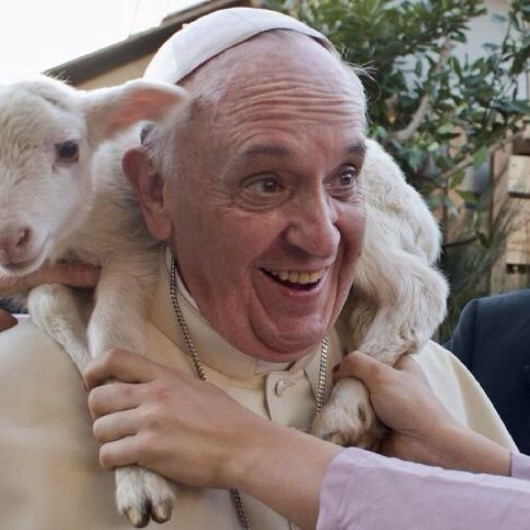
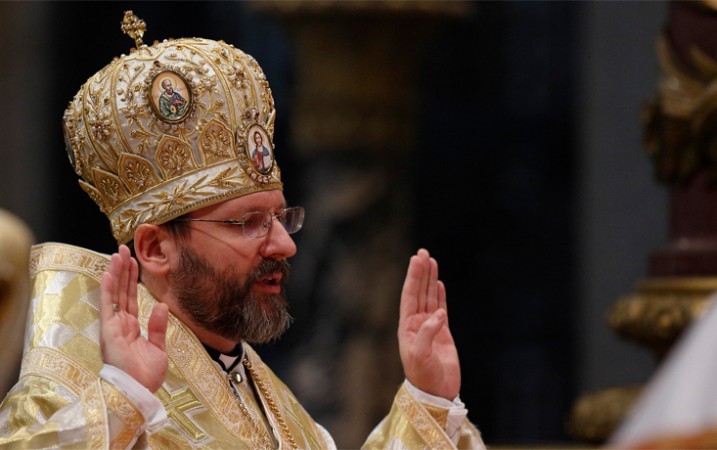
HOW TO WIN ROMAN CATHOLICS TO CHRIST
Don't attack the Catholic Church per se - this awakens hostility; don't focus on denominational names (many Catholics avoid "Roman" because this implies a distinction from "original" church or that the church is not truly "universal").
- There are many fine Christians who are Roman Catholics.
Present Christ, not Protestantism/your church.
Don't get hung up on externals (eg rites, traditions).
Establish whether they are nominal or practicing Catholics- this will have an impact on the way you share your message.
Know the truth, eg about baptism, salvation, communion (and where to find Scriptural support).
Focus on what they do believe, especially about the supernatural.
Focus on the mediatorship of Jesus Christ.
Show them they can have assurance of sins forgiven and assurance of salvation.
Emphasize relationship with God, rather than tradition. Some of the most earnest people seeking to connect with God are those with a Roman Catholic background. Many Catholics are more committed to prayer and belief in the supernatural things of God than many Protestants.
Emphasize the "once for all" nature of the sacrificial ("vicarious") death of Christ (Hebrews 9:25, 26; 10:10-12; Romans 6:8).
Point to Christ who is no longer suffering, hanging on His cross, but is risen, ascended, glorified. His resurrection changed everything.
Stress the need for them to repent from sin toward God and be born again by faith; not through religious works, but God's unconditional love (Romans 4:1-5, 21-25; 5:1).
Encourage them to study the Bible (eg Douay or Jerusalem Bible), but don't get hung up on the Apocrypha.
Encourage them to pray to God through Jesus Christ according to Scripture.
Share positively - they will not fall into mortal sin by trusting Christ alone for salvation.




 Early depiction of the Council of Nicaea; Constantine at the centre.
Early depiction of the Council of Nicaea; Constantine at the centre.









